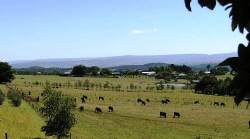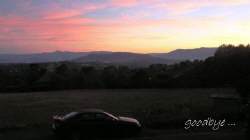|
AUSTRALIA |
|
|
|
|
|
|
|
|
|
|
|

Under Construction
|
|
|
|
|
|
|
Click the flag for German or Italian
|

|

|
|
|
|
|
|
|
Don't expect to see all of Australia on my website, please !
I only show you my way of travelling, enjoying sightseeing, discovering several historical sites myself, taking pictures, enjoying picturesque landscapings and peoples hospitality everywhere, making new friends, and just having fun. If you want to know more about this continent, want to see more or larger pictures or have other questions, don't hesitate to ask. Send an email, I'd be glad to answer your request. |
 |
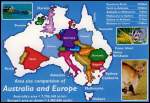
AUSTRALIA vs. AUSTRIA
|
|
|
|
|
|
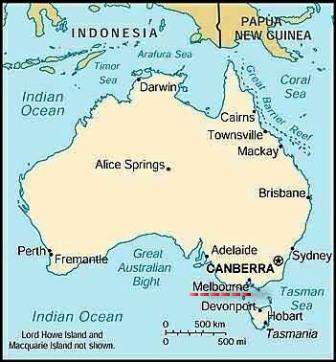
|
|
|
|
|
|
February 24 - March 18, 2006
Flight with Austrian Airlines:
SALZBURG>VIENNA>SINGAPOOR>MELBOURNE>
Melbourne airport (Pkw) > WANDIN
|
|
|
|
|
|
THANK YOU !!
Even though I was able to see only a small part of this beautiful continent during those three weeks, some of the sights were just overwhelmig, views were stunning or full of surprise, and oftimes overpowering for me coming from a small country like Austria. For this very special driving adventure I owe Helen and Keith in Wandin a debt of gratitude !!
L i z
|
 |
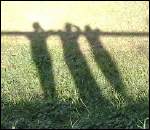
Liz - Keith - Helen: 3 auf Reisen - 3 Viaggiator
|
|
|
|
|
|
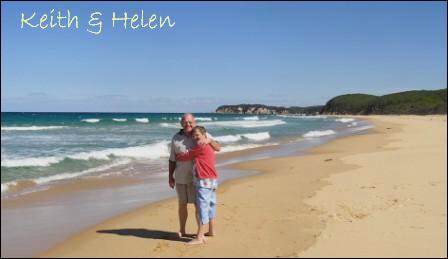
|
|
|
|
|
|
|
USTRALIA - Lonely dreamlike beaches - one after the other - Traumhaft einsame Strände, einer nach dem anderen - Spiagge isolate da sogno, una dietro l'altra
|
|
|
|
MELBOURNE Victoria) |
|
|
|
Melbourne is the capital of Victoria, and after Sydney the second largest city in Australia. Population appr. 3.6 millionin the Melbourne metropolitan area and 69,670 in the city. It's motto "Vires acquirit eundo" means "we gather strength as we go." Canberra is the capital of Australia, Melbourne was it from 1901 until 1927.
|
|
|
|
|
|
|

Melbourne Panorama and 'Aquarium' on the left - MONSTERs of the DEEP
|
|
|
|
|
|
|
|
|
WANDIN >> 'Puffing Billy' |
|
|
Puffing Billy' Australia's Favourite Steam Train. WANDIN (by car) > BELGRAVE (by train) > GEMBROOK, but we did not go by train all the way to Gembrock. Helen and I went by train to EMERALD to see her sister, while Keith followed the train by car and took pictures of the train on his way as you can see in the last öpicture in the gallery.
|
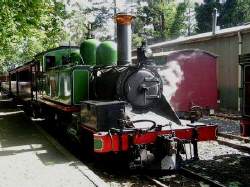
|
|
|
|
|
|
|
|
|
|
|
|
|
|
|
|
PHILIP ISLAND |
|
|
Our next adventure:
Driving from Wandin (Pkw) to Phillip Island, continue eastwards to Tathra and back again.
|
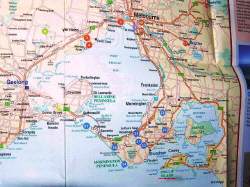
|
|
|
|
'Penguin Parade' |
|
|

|
The fascinating Little Blue Penguin (eudyptula minor) is only found in Southern Australian waters with the largest existing colony at the world renowned "Penguin Parade" on Phillip Island. At 33 cm the ink blue little bird is the smallest of the 18 known species of penguin and is unique in that it waits until after sunset before coming ashore.
|
|
|
|
|
|
|
|
|
|
TATHRA fishing |
|
|
Tathra is 18 km from Bega via the Snowy Mountains Highway, a coastal town renowned for it's beaches, waterways and fishing.
Access: From Bega follow the Snowy Mountains Highway, the road is sealed all the way. From Merimbula take Sapphire Coast Drive till it meets the Snowy Mountains Hwy then turn right and follow that through to Tathra.
Population: Tathra township plus surrounding areas Tanja and Wopengo total 2144.
Tathra is often promoted as the quiet alternative on many tourist brochures yet the fishing in the waters around Tathra is far from quiet.
|
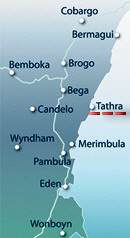
|
|
|
|
|
|
|
|
|
|
WILLIAM RICKETTS SANCTUARY |
|
|
40 km east of MELBOURNE
Today, the William Ricketts Sanctuary is a unique place of spiritual renewal and quiet reflection where visitors can see for themselves the vision and passion that live in his art.
The Sanctuary reflects a spirit of place expressed through one man's dream.
|
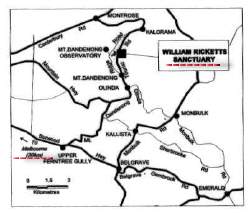
|
|
|
|
|
|
|
William Ricketts lived and worked at Mt. Dandenong from 1934 until 1993. His life's artistic work was transformed by his years of contact with the desert people of the Pitjantjara and Arrernte whose indigenous culture inspired his major creative output. He lived at the Sanctuary until his peaceful death in 1993, aged ninety-four. His was a lifetime of concern and care for the environment, expressed in his energetic creation of this place. Deeply felt connections to the earthly mother and the spirit of the land are explored in 92 ceramic sculptures of people and animals which merge with the natural surroundings: a wise elder is as one with an ancient tree, his beard flowing into its trunk and roots; young children play with native animals among ferns and flowing water; and the human and natural spirit becomes one.
|
 |
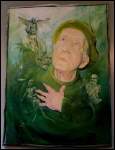
|
|
|
|
|
|
|
|
|
WANDIN >> 'Healesville Sanctuary' |
|
|
Healesville Sanctuary - original name 'The Sir Colin MacKenzie Sanctuary' - was officially opened by the Chief Secretary, Mr. Macfarlan, on 30 May 1934. It is situated only an hour away from Melbourne, but a visit there will take you closer to Australia’s unique wildlife than you ever thought possible. Featuring wild encounters and unique experiences with Australian wildlife amongst the sights, sounds and scents of the stunning bushland surrounds.
|
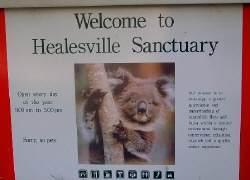
|
|
|
|
|
|
|
|
|
|
Lyrebird |
|
|
The Lyrebird is one of the finest songbird in the world. As well as having a distinctive song of their own, lyrebirds also possess an unsurpassed talent for mimicry. You may think you are listening to the sounds of kookaburras, cockatoos or whipbirds ringing through the forests - but be aware - you could be listening to a medley from a lyrebird!
|
 |
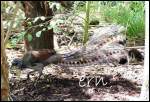
|
|
|
|
|
|
The male Lyrebird's finest song is saved for courtship. 'Dancing' on territorial mounds built from scratched up soil, he 'woos' the female Lyrebird to his mating territory, impressing her with mimicry, song, some fancy footwork and a spectacular display of tail feathers.
Healesville Sanctuary's breeding program fosters continuing study and observation, generating a future for lyrebirds. In the wild, preserving native flora and controlling introduced predators such as foxes, dogs and feral cats are vital in guaranteeing a future for the Lyrebird.
|
|
|
|
|
|
|
|
|
Twelve Apostles |
|
|
The "Twelve Apostles" are a collection of natural limestone stacks up to 60 m high, standing just off shore in the Port Cambell National Park, on the Great Ocean Road in Victoria between the towns of Port Campbell and Princetown. Their proximity to one another has made the site a popular tourist attraction. Originally the site was called the Sow and Piglets. The name was changed in the 1950s to the more majestic "The Twelve Apostles" to lure more visitors even though there were only nine left.
|
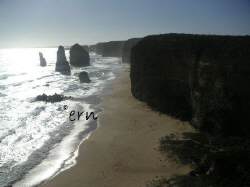
|
|
|
|
|
|
|
|
|
|
|
|
|
In the early 2000s a visitor centre was built on the inland side of the road to allow for easy parking and access to the best viewing area. You can also get a helicopter ride around them. The stacks have been formed by erosion, and are varying heights and thicknesses. A number have fallen over entirely as waves continually erode their bases. A 50-metre tall Apostle collapsed on July 3, 2005, leaving only eight. Another well-known feature in Port Campbell National Park to succumb to erosion was the 'London Arch'. The rate of erosion at the base of the limestone pillars is approximately 2 cm per year.
|
|
|
|
|
|
|
|
|
before you leave ... |
|
|
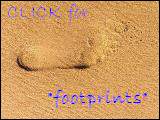
|
|
|
FAREWELL |
|
|
|
|
|
|
|
|
|
|
|
|
|
|
|
Click the flag for German or Italian
|

|

|
|
|
|
|
|
|
|
|
|
|
|
|
|
|
|
AUSTRALIA - deutsch
|
|
 |
 |
 |
 |
 |
















